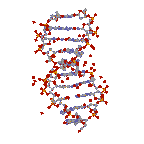美国FDA分析方法验证指南中英文对照(四)
上一篇 / 下一篇 2009-01-05 11:34:48/ 个人分类:药物分析
VII. METHODS VALIDATION FOR NDAs, ANDAs, BLAs, AND PLAs
A. Noncompendial Analytical Procedures
In an NDA, ANDA, BLA, or PLA, data must be submitted to establish that the analytical procedures used in testing meet proper standards of accuracy and reliability (21 CFR 211.194(a)(2)). Methods validation is the process of demonstrating that analytical procedures are suitable for their intended use. At the time of submission, the NDA, ANDA, BLA, or PLA should contain methods validation information to support the adequacy of the analytical procedures.
VII.NDA,ANDA,BLA和PLA中的分析方法验证
A.非药典分析方法
在NDA,ANDA,BLA或PLA中,应当要递交资料以说明检测中所用的分析方法是满足适当的准确度和可靠性要求(21 CFR 211.194(a)92))。分析方法验证是个论述分析方法是适用于其拟定用途的过程。在递交资料,NDA,ANDA,BLA或PLA中应当要包含分析方法验证资料以支持分析方法的准确度。
The International Conference on Harmonisation (ICH) guidance Q2A Text on Validation of Analytical Procedures (March 1995) and Q2B Validation of Analytical Procedures: Methodology (November 1996) provide recommendations on validation of analytical procedures. Analytical procedures outside the scope of the ICH guidances should still be validated.
ICH指导原则Q2A:分析方法验证(1995年3月)和Q2B:分析方法验证:方法学(1996年11月)给出了分析方法验证的建议。对于超出ICH指导原则范围的分析方法也是需要验证的。
1. Validation Characteristics
Applicants should submit information on the validation characteristics of their proposed analytical procedures (see ICH Q2A and ICH Q2B). Although not all of the validation characteristics are needed for all types of tests (see section VII.A.3), typical validation characteristics are:
1.验证项目
申请者应当要送交其所拟定分析方法的验证项目方面的信息(见ICH Q2A和ICH Q2B)。尽管不是对于所有类型的分析方法都需要进行所有的验证项目(见第VII.A.3章),但还是有典型的验证项目,如:
2. Other Methods Validation Information
Methods validation information should also include:
Data to demonstrate the stability of all analytical sample preparations through the time required to complete the analysis.
2.其它验证资料
分析方法验证资料还应当要包括:
说明所有分析制备样品在完成分析所需的时间内的稳定性的资料。
Legible reproductions of representative instrument output or recordings (e.g., chromatograms) and raw data output (e.g., integrated areas), as appropriate. Instrument output for placebo, standard, and sample should also be provided (see section VII.A.2.c).
清晰可读的仪器代表性输出和记录资料(如色谱图)和原始资料输出(积分面积)。安慰剂,对照品和样品的仪器输出也都是需要提供的(见第VII.A.2.c章)。
Representative calculations using submitted raw data, to show how the impurities in drug substance are calculated. Information from stress studies (see section VII.A.2.b). Impurities labeled with their names and location identifiers (e.g., RRT for chromatographic data) for the impurity analytical procedure.
代表性计算公式,以表明原料药中的杂质是如何计算的。(见VII.A.2.b章)。对于杂质分析方法,要标明杂质的名称和位置标识符(如,色谱中的相对保留时间RRT)。
For drug substances:
A discussion of the possible formation and control of polymorphic and enantiomeric substances.
Identification and characterization of each organic impurity, as appropriate. This information may not be needed for all products (e.g., botanicals). Other impurities (e.g., inorganics, residual solvents) should be addressed and quantitated.
对于原料药:
讨论可能会形成的异构体并讨论异构体的控制。
对每个有机杂质进行适当的标识和界定。不是所有的产品(如,植物药)都需要这些资料的。对于其它杂质(如无机杂质,残留溶剂),应当要进行说明并定量分析。
Recommendations on submitting information on impurities is provided in various FDA guidances such as the ICH guidance Q3A Impurities in New Drug Substances (January 1996).
A list of known impurities, with structure if available, including process impurities, degradants, and possible isomers.
FDA的指导文件,如比ICH指导原则Q3A 新原料药中的杂质(1996年1月)。
已知杂质列表,包括工艺杂质,降解产物和可能的异构体。如果知道结构的话,也需提供。
For drug products:
A degradation pathway for the drug substance in the dosage form, 419where possible. Data demonstrating recovery from the sample matrix as illustrated by the accuracy studies. Data demonstrating that neither the freshly prepared nor the degraded placebo interferes with the quantitation of the active ingredient. ICH Q2A and Q2B address almost all of the validation parameters. Areas that should be provided in more detail are described below.
对于制剂:
原料药在制剂中可能的降解途径。通过准确度实验论证的样品回收率资料。要有资料论证无论是新制的安慰剂还是分解了的安慰剂都不会影响活性成分的定量分析。ICH Q2A和ICH Q2B几乎对所有的验证参数都进行了论述。下面论述的是那些还需要更详细地进行论述的方面。
a. Robustness
Robustness, a measure of the analytical procedure's capability to remain unaffected by small but deliberate variations, is described in ICH Q2A and Q2B. Such testing should be performed during development of the analytical procedure and the data discussed and/or submitted. In cases where an effect is observed, representative instrument output (e.g., chromatograms) should be submitted.
a.耐用性
ICH Q2A和ICH Q2B对耐用性是有论述的,它衡量的是分析方法在细微的变化下不受影响的能力。该实验应当是在分析方法开发过程中进行的,对实验结果进行讨论和/或递交。如果观察到有影响,需提供代表性仪器输出(如色谱图)。
b. Stress Studies
Degradation information obtained from stress studies (e.g., products of acid and base hydrolysis, thermal degradation, photolysis, oxidation) for the drug substance and for the active ingredient in the drug product should be provided to demonstrate the specificity of the assay and analytical procedures for impurities. The stress studies should demonstrate that impurities and degradants from the active ingredient and drug product excipients do not interfere with the quantitation of the active ingredient. Stress studies are described in various FDA guidances relating to the stability of drug products (see references). The design of the stress studies and the results should be submitted to the stability section of the application. Representative instrument output (e.g., chromatograms) and/or other appropriate data (e.g., degradation information obtained from stress studies) should be submitted in the sections on analytical procedures and controls.
b.强降解实验
FDA很多关于药品稳定性的指导原则都对强降解实验进行了论述。
在申请的稳定性一章中应当要提供的资料有:强降解实验设计和实验结果。而代表性仪器输出(如:色谱图)和/或其它资料(强降解实验中所得的降解信息)应当要提供在分析方法和控制一章中。
c. Instrument Output/Raw Data
i. Organic Impurities
Representative data should be submitted to support an assessment of the organic impurities. Representative data for residual solvents are generally not needed. Instrument output and the raw numerical values (e.g., peak area) with appropriate identification and labeling (e.g., RT for chromatographic peaks, chemical shift (d) and coupling constant (J) for NMR) should be provided. The impurity profile should be assessed at the quantitation limit and the instrument output provided. Additional information should be provided to confirm that the impurity profile is adequately characterized. For example, a representative chromatogram using detection at a low wavelength, such as 205 nm, and double the proposed total run time could be submitted to support the specificity of the analytical procedure.
c.仪器输出/原始资料
i. 有机杂质
应当要提供代表性资料以支持有机杂质的评估。一般来说,是不需要残留溶剂的代表性资料的。仪器输出和原始数值(比如,峰面积)及合适的标记和标注(比如,色谱峰的保留时间,核磁共振的化学位移和耦合常数)都应当要提供。根据所提供的定量限和仪器输出对杂质情况进行评估。还应当要提供其它资料以确认杂质情况得到了充分地界定。比如说,比如说,代表性图谱选用的检测波长是205nm,则可以将拟定的运行时间延长至两倍以支持分析方法的专属性。
For quantitation purposes, the response factor of the drug substance may be
used for impurities without a reference standard. In cases where the response factors are not close, this practice may still be acceptable, provided a correction factor is applied or the impurities are, in fact, being overestimated. Acceptance criteria and analytical procedures used to estimate identified or unidentified impurities often are based on analytical assumptions (e.g., equivalent detector response). Assumptions should be discussed and justified.
在定量分析时,原料药的响应因子可用于没有相应对照品的杂质。如果响应因子不接近的话,只要应用了较正因子或或者杂质实际上是被高估的话,这样做也是可行的。用于评估指定杂质或未指定杂质的合格标准和分析方法经常都是基于分析假设的(比如,相当的检测器响应)。应当要对这些假设进行讨论和合理性说明。
ii. Drug Substance
Data should be submitted showing the separation and detection of impurities using spiked or stress samples. Complete impurity profiles as graphic output (e.g., chromatograms) and raw data (e.g, integrated peak areas) of representative batches should be submitted in the sections on analytical procedures and controls for the drug substance. For ANDAs and related submissions, appropriate information for the batches used in the biobatch or submission batch should be provided. All responses (e.g., peaks) should be labeled. The analytical procedure used should be capable of differentiating changes, if any, between past and present batches. The quantitation limit and the type of organic impurity (e.g., degradant, process impurity) should be stated. The analytical procedure number, batch number, manufacturing date and site, and date of analysis should be provided.
ii.原料药
ANDA和相关的递交,用于生物利用度研究的批次(biobatch)或者提交批次(submission batch)的相关资料应当要提供。所有的响应(比如,色谱峰)都应当要进行标注。所用的分析方法应当要有能力区分先前批次和当前批次之间的变化,如果有这些变化的话。应当要说明定量限和有机杂质的类型(比如:降解物,工艺杂质)。还需提供分析方法编号,批号,生产日期和生产地点及分析日期。
iii. Drug Product
Information such as instrument output (e.g., chromatograms) and raw data (e.g., integrated peak areas) from representative batches under long-term and accelerated stability conditions, and stressed samples should be submitted in the sections on analytical procedures and controls of the drug product. For ANDAs and related submissions, appropriate information for the biobatch or submission batch should be provided. References to the raw data (e.g., chromatograms) should be included in the stability section of the application.
iii.制剂
在制剂的分析方法和控制一章中,应要当提供的资料有:代表性批号在长期和加速稳定性实验条件下及强降解实验条件下的仪器输出(如,图谱)和原始资料(如峰面积)。对于ANDA和相关递交,应当要提供生物利用度实验批次或递交批次的适当资料。在申请的稳定性章节中应当要引用原始资料(比如:图谱)。
At a minimum, the submission should include instrument output and raw data for release testing and at the latest available time point for the same batch. All responses (e.g., peaks) should be labeled and identified. In addition, the analytical procedure number, batch number of the drug product, manufacturing date, date of analysis, source and batch number of drug substance, manufacturing site, and container/closure information should be provided. The analytical procedures used should be capable of differentiating changes, if any, between past and present batches. The quantitation limit and the type (e.g., degradant, leachables from packaging) should be reported. Multiple methodologies can be used.
至少,递交材料中应当要包括放行检测(Release testing)的仪器输出和原始资料. 需标注所有的响应信号(如色谱峰)。此外,还要提供,分析方法编号,制剂的批号,生产日期,分析日期,原料药的来源和批号,生产地点及容器/密闭系统信息。如在过往批次和现批次之间存在差异的话,所用的分析方法应当要有能力区分出来。应当要报告检测限和类型(如,降解物,包装时的漏出物)。
3. Recommended Validation Characteristics for Types of Tests
Table 1 is a summary of the validation characteristics that should be addressed during validation of different types of analytical procedures. The same methodology can be used for several purposes. The validation information should support the intended purpose of the test. For example, if Raman spectroscopy is the methodology selected to quantitate polymorphic forms as impurities, or chiral HPLC for enantiomeric impurities, the recommended validation characteristics in Table 1 under quantitative testing for impurities would apply. However, if Raman spectroscopy or chiral HPLC are used for the purpose of identification or as specific tests, the recommended validation characteristics listed for those types of tests would apply.
3.各类检测的推荐验证项目
表1概述了在不同分析方法的验证过程中所需要的验证项目。同一分析方法可用于多个用途。验证资料需要能支持该分析方法的拟定用途。比如说,如果拉曼光谱用于定量分析多晶型杂质,或手性HPLC用于分析异构体杂质,则要应用表1中杂质定量分析 中所推荐的验证项目。然而,如果拉曼光谱或手性HPLC被用于鉴定或特征实验的话,则要应用表1中所推荐的这些类型的验证项目。
NOTE注:
- Signifies that this characteristic is not normally evaluated. 表示通常不需要验证的项目。
+ Signifies that this characteristic is normally evaluated. 表示通常需验证的项目。
1 In cases where reproducibility has been performed, intermediate precision is not needed. 假如已经论证了重现性,可不需要再论证中间精密度。
2 Lack of specificity for an analytical procedure may be compensated for by the addition of a second analytical procedure. 如果一分析方法缺少专属性的话,则需要另一分析方法进行补偿。
3 May be needed in some cases. 有些情况下是需要的。
4 May not be needed in some cases. 有些情况下是不需要的。
5 Lack of specificity for an assay for release may be compensated for by impurities testing. 缺少专属性数据时可用杂质测试的数据来补偿。
a:Identification
Identification analytical procedures may include tests such as IR, differential scanning calorimetry (DSC), X-ray diffraction (XRD), UV, and HPLC retention time. A specific identification test should be included for the active ingredient whenever possible. In cases where a nonspecific identification analytical procedure is proposed for the active ingredient, two independent analytical procedures are generally sufficient, if justified. For other identification tests (e.g., a chiral HPLC retention time as confirmation for the presence of an enantiomer, chloride test for a counterion) a single test is acceptable. This concept of the number of identification tests is applicable to both the drug substance and drug product.
a. 鉴别
定性分析方法有:红外(IR),差示热分析(DSC),X-射线衍射(XRD)和HPLC保留时间。对于原料药,尽可能要有专属性强的鉴别实验,如果用的是专属性不强的定性分析方法,则通常来说运用两个独立的分析方法应当是足够的。对于其它的一些定性分析方法(如,手性HPLC的保留时间用于确认是否存在异构体,平衡离子的氯化物实验),就一个检测也是可可行的。定性实验数目的概念既适用于原料药,也适用于制剂。
b. Impurities
The validation characteristics under quantitative testing for impurities, as described in Table 1, apply, regardless of which methodology is used to quantitate impurities. If the same analytical procedure is proposed as a limit test, validation characteristics under limit testing for impurities will apply.
b. 杂质
表1中杂质定量分析 项下所说的相应验证项目。如果同样的方法还用做定性检测的分析方法的话,则要对表1中杂质定性分析 项下的验证项目进行验证。
c. Assay
Assay includes the content of the active ingredient, preservative (if used), and measurement of content in dissolution and content uniformity samples.
c. 含量
含量分析包括活性成分的含量,所用到的防腐剂的含量,及溶出度和含量均匀度检测样品的含量测定。
d. Specific Tests
Specific tests to control the drug substance, excipient, or drug product can include tests such as particle size analysis, droplet distribution, spray pattern, dissolution (excludes measurement), optical rotation, and methodologies such as DSC, XRD, and Raman spectroscopy. The validation characteristics may differ for the various analytical procedures. For example, accuracy, repeatability, intermediate precision and robustness should be evaluated for molecular size distribution gel permeation chromatography (GPC).
d.特定实验
用于原料药,赋形剂或制剂控制的特定检测包括粒径分析,雾化状态,溶出度,旋光度和比如DSC,XRD及拉曼光谱等方法。不同的分析方法所需的验证项目是不尽相同的。比如说,对于凝胶渗透色谱(GPC),需要考察其准确度,重复性,中间精密度和耐用性。
B. Compendial Analytical Procedures
The suitability of a compendial analytical procedure must be verified under actual conditions of use (21 CFR 211.194(a)(2)). Information to demonstrate that USP/NF analytical procedures are suitable for the drug product or drug substance should be included in the submission. Information on the specificity, intermediate precision, and stability of the sample solution should be included. Compendial assay analytical procedures may not be stability-indicating, and this should be considered when developing the specification (see section III.C). For compendial items, additional analytical procedures, such as impurities or osmolality, may be requested to support the quality of the drug product or drug substance. These additional analytical procedures should be validated (see section VII.A).
B.药典分析方法(21CFR 211.194(a)(2))。
在申请中应当要提供药典分析方法适用于该药品或原料药分析的论证资料。还应该要包括专属性,中间精密度,和样品溶液稳定性方面的资料。药典含量分析方法可能是没有稳定性指示能力的,因此在开发质量标准的过程中因当要考虑这个(见第III.C.章)。对于药典项目,可能需要补充方法,比如杂质或渗透度,来控制制剂或原料药的质量。这些补充方法也是需要验证的(见第VII.A.章)。
A. Noncompendial Analytical Procedures
In an NDA, ANDA, BLA, or PLA, data must be submitted to establish that the analytical procedures used in testing meet proper standards of accuracy and reliability (21 CFR 211.194(a)(2)). Methods validation is the process of demonstrating that analytical procedures are suitable for their intended use. At the time of submission, the NDA, ANDA, BLA, or PLA should contain methods validation information to support the adequacy of the analytical procedures.
VII.NDA,ANDA,BLA和PLA中的分析方法验证
A.非药典分析方法
在NDA,ANDA,BLA或PLA中,应当要递交资料以说明检测中所用的分析方法是满足适当的准确度和可靠性要求(21 CFR 211.194(a)92))。分析方法验证是个论述分析方法是适用于其拟定用途的过程。在递交资料,NDA,ANDA,BLA或PLA中应当要包含分析方法验证资料以支持分析方法的准确度。
The International Conference on Harmonisation (ICH) guidance Q2A Text on Validation of Analytical Procedures (March 1995) and Q2B Validation of Analytical Procedures: Methodology (November 1996) provide recommendations on validation of analytical procedures. Analytical procedures outside the scope of the ICH guidances should still be validated.
ICH指导原则Q2A:分析方法验证(1995年3月)和Q2B:分析方法验证:方法学(1996年11月)给出了分析方法验证的建议。对于超出ICH指导原则范围的分析方法也是需要验证的。
1. Validation Characteristics
Applicants should submit information on the validation characteristics of their proposed analytical procedures (see ICH Q2A and ICH Q2B). Although not all of the validation characteristics are needed for all types of tests (see section VII.A.3), typical validation characteristics are:
1.验证项目
申请者应当要送交其所拟定分析方法的验证项目方面的信息(见ICH Q2A和ICH Q2B)。尽管不是对于所有类型的分析方法都需要进行所有的验证项目(见第VII.A.3章),但还是有典型的验证项目,如:
- Accuracy 准确度
- Precision (repeatability and intermediate precision) 精密度(重复性和中间精密度)
- Specificity 专属性
- Detection limit 检测限
- Quantitation limit 定量限
- Linearity 线性
- Range 范围
- Robustnes 耐用性
2. Other Methods Validation Information
Methods validation information should also include:
Data to demonstrate the stability of all analytical sample preparations through the time required to complete the analysis.
2.其它验证资料
分析方法验证资料还应当要包括:
说明所有分析制备样品在完成分析所需的时间内的稳定性的资料。
Legible reproductions of representative instrument output or recordings (e.g., chromatograms) and raw data output (e.g., integrated areas), as appropriate. Instrument output for placebo, standard, and sample should also be provided (see section VII.A.2.c).
清晰可读的仪器代表性输出和记录资料(如色谱图)和原始资料输出(积分面积)。安慰剂,对照品和样品的仪器输出也都是需要提供的(见第VII.A.2.c章)。
Representative calculations using submitted raw data, to show how the impurities in drug substance are calculated. Information from stress studies (see section VII.A.2.b). Impurities labeled with their names and location identifiers (e.g., RRT for chromatographic data) for the impurity analytical procedure.
代表性计算公式,以表明原料药中的杂质是如何计算的。(见VII.A.2.b章)。对于杂质分析方法,要标明杂质的名称和位置标识符(如,色谱中的相对保留时间RRT)。
For drug substances:
A discussion of the possible formation and control of polymorphic and enantiomeric substances.
Identification and characterization of each organic impurity, as appropriate. This information may not be needed for all products (e.g., botanicals). Other impurities (e.g., inorganics, residual solvents) should be addressed and quantitated.
对于原料药:
讨论可能会形成的异构体并讨论异构体的控制。
对每个有机杂质进行适当的标识和界定。不是所有的产品(如,植物药)都需要这些资料的。对于其它杂质(如无机杂质,残留溶剂),应当要进行说明并定量分析。
Recommendations on submitting information on impurities is provided in various FDA guidances such as the ICH guidance Q3A Impurities in New Drug Substances (January 1996).
A list of known impurities, with structure if available, including process impurities, degradants, and possible isomers.
FDA的指导文件,如比ICH指导原则Q3A 新原料药中的杂质(1996年1月)。
已知杂质列表,包括工艺杂质,降解产物和可能的异构体。如果知道结构的话,也需提供。
For drug products:
A degradation pathway for the drug substance in the dosage form, 419where possible. Data demonstrating recovery from the sample matrix as illustrated by the accuracy studies. Data demonstrating that neither the freshly prepared nor the degraded placebo interferes with the quantitation of the active ingredient. ICH Q2A and Q2B address almost all of the validation parameters. Areas that should be provided in more detail are described below.
对于制剂:
原料药在制剂中可能的降解途径。通过准确度实验论证的样品回收率资料。要有资料论证无论是新制的安慰剂还是分解了的安慰剂都不会影响活性成分的定量分析。ICH Q2A和ICH Q2B几乎对所有的验证参数都进行了论述。下面论述的是那些还需要更详细地进行论述的方面。
a. Robustness
Robustness, a measure of the analytical procedure's capability to remain unaffected by small but deliberate variations, is described in ICH Q2A and Q2B. Such testing should be performed during development of the analytical procedure and the data discussed and/or submitted. In cases where an effect is observed, representative instrument output (e.g., chromatograms) should be submitted.
a.耐用性
ICH Q2A和ICH Q2B对耐用性是有论述的,它衡量的是分析方法在细微的变化下不受影响的能力。该实验应当是在分析方法开发过程中进行的,对实验结果进行讨论和/或递交。如果观察到有影响,需提供代表性仪器输出(如色谱图)。
b. Stress Studies
Degradation information obtained from stress studies (e.g., products of acid and base hydrolysis, thermal degradation, photolysis, oxidation) for the drug substance and for the active ingredient in the drug product should be provided to demonstrate the specificity of the assay and analytical procedures for impurities. The stress studies should demonstrate that impurities and degradants from the active ingredient and drug product excipients do not interfere with the quantitation of the active ingredient. Stress studies are described in various FDA guidances relating to the stability of drug products (see references). The design of the stress studies and the results should be submitted to the stability section of the application. Representative instrument output (e.g., chromatograms) and/or other appropriate data (e.g., degradation information obtained from stress studies) should be submitted in the sections on analytical procedures and controls.
b.强降解实验
FDA很多关于药品稳定性的指导原则都对强降解实验进行了论述。
在申请的稳定性一章中应当要提供的资料有:强降解实验设计和实验结果。而代表性仪器输出(如:色谱图)和/或其它资料(强降解实验中所得的降解信息)应当要提供在分析方法和控制一章中。
c. Instrument Output/Raw Data
i. Organic Impurities
Representative data should be submitted to support an assessment of the organic impurities. Representative data for residual solvents are generally not needed. Instrument output and the raw numerical values (e.g., peak area) with appropriate identification and labeling (e.g., RT for chromatographic peaks, chemical shift (d) and coupling constant (J) for NMR) should be provided. The impurity profile should be assessed at the quantitation limit and the instrument output provided. Additional information should be provided to confirm that the impurity profile is adequately characterized. For example, a representative chromatogram using detection at a low wavelength, such as 205 nm, and double the proposed total run time could be submitted to support the specificity of the analytical procedure.
c.仪器输出/原始资料
i. 有机杂质
应当要提供代表性资料以支持有机杂质的评估。一般来说,是不需要残留溶剂的代表性资料的。仪器输出和原始数值(比如,峰面积)及合适的标记和标注(比如,色谱峰的保留时间,核磁共振的化学位移和耦合常数)都应当要提供。根据所提供的定量限和仪器输出对杂质情况进行评估。还应当要提供其它资料以确认杂质情况得到了充分地界定。比如说,比如说,代表性图谱选用的检测波长是205nm,则可以将拟定的运行时间延长至两倍以支持分析方法的专属性。
For quantitation purposes, the response factor of the drug substance may be
used for impurities without a reference standard. In cases where the response factors are not close, this practice may still be acceptable, provided a correction factor is applied or the impurities are, in fact, being overestimated. Acceptance criteria and analytical procedures used to estimate identified or unidentified impurities often are based on analytical assumptions (e.g., equivalent detector response). Assumptions should be discussed and justified.
在定量分析时,原料药的响应因子可用于没有相应对照品的杂质。如果响应因子不接近的话,只要应用了较正因子或或者杂质实际上是被高估的话,这样做也是可行的。用于评估指定杂质或未指定杂质的合格标准和分析方法经常都是基于分析假设的(比如,相当的检测器响应)。应当要对这些假设进行讨论和合理性说明。
ii. Drug Substance
Data should be submitted showing the separation and detection of impurities using spiked or stress samples. Complete impurity profiles as graphic output (e.g., chromatograms) and raw data (e.g, integrated peak areas) of representative batches should be submitted in the sections on analytical procedures and controls for the drug substance. For ANDAs and related submissions, appropriate information for the batches used in the biobatch or submission batch should be provided. All responses (e.g., peaks) should be labeled. The analytical procedure used should be capable of differentiating changes, if any, between past and present batches. The quantitation limit and the type of organic impurity (e.g., degradant, process impurity) should be stated. The analytical procedure number, batch number, manufacturing date and site, and date of analysis should be provided.
ii.原料药
ANDA和相关的递交,用于生物利用度研究的批次(biobatch)或者提交批次(submission batch)的相关资料应当要提供。所有的响应(比如,色谱峰)都应当要进行标注。所用的分析方法应当要有能力区分先前批次和当前批次之间的变化,如果有这些变化的话。应当要说明定量限和有机杂质的类型(比如:降解物,工艺杂质)。还需提供分析方法编号,批号,生产日期和生产地点及分析日期。
iii. Drug Product
Information such as instrument output (e.g., chromatograms) and raw data (e.g., integrated peak areas) from representative batches under long-term and accelerated stability conditions, and stressed samples should be submitted in the sections on analytical procedures and controls of the drug product. For ANDAs and related submissions, appropriate information for the biobatch or submission batch should be provided. References to the raw data (e.g., chromatograms) should be included in the stability section of the application.
iii.制剂
在制剂的分析方法和控制一章中,应要当提供的资料有:代表性批号在长期和加速稳定性实验条件下及强降解实验条件下的仪器输出(如,图谱)和原始资料(如峰面积)。对于ANDA和相关递交,应当要提供生物利用度实验批次或递交批次的适当资料。在申请的稳定性章节中应当要引用原始资料(比如:图谱)。
At a minimum, the submission should include instrument output and raw data for release testing and at the latest available time point for the same batch. All responses (e.g., peaks) should be labeled and identified. In addition, the analytical procedure number, batch number of the drug product, manufacturing date, date of analysis, source and batch number of drug substance, manufacturing site, and container/closure information should be provided. The analytical procedures used should be capable of differentiating changes, if any, between past and present batches. The quantitation limit and the type (e.g., degradant, leachables from packaging) should be reported. Multiple methodologies can be used.
至少,递交材料中应当要包括放行检测(Release testing)的仪器输出和原始资料. 需标注所有的响应信号(如色谱峰)。此外,还要提供,分析方法编号,制剂的批号,生产日期,分析日期,原料药的来源和批号,生产地点及容器/密闭系统信息。如在过往批次和现批次之间存在差异的话,所用的分析方法应当要有能力区分出来。应当要报告检测限和类型(如,降解物,包装时的漏出物)。
3. Recommended Validation Characteristics for Types of Tests
Table 1 is a summary of the validation characteristics that should be addressed during validation of different types of analytical procedures. The same methodology can be used for several purposes. The validation information should support the intended purpose of the test. For example, if Raman spectroscopy is the methodology selected to quantitate polymorphic forms as impurities, or chiral HPLC for enantiomeric impurities, the recommended validation characteristics in Table 1 under quantitative testing for impurities would apply. However, if Raman spectroscopy or chiral HPLC are used for the purpose of identification or as specific tests, the recommended validation characteristics listed for those types of tests would apply.
3.各类检测的推荐验证项目
表1概述了在不同分析方法的验证过程中所需要的验证项目。同一分析方法可用于多个用途。验证资料需要能支持该分析方法的拟定用途。比如说,如果拉曼光谱用于定量分析多晶型杂质,或手性HPLC用于分析异构体杂质,则要应用表1中杂质定量分析 中所推荐的验证项目。然而,如果拉曼光谱或手性HPLC被用于鉴定或特征实验的话,则要应用表1中所推荐的这些类型的验证项目。
表1:不同类型检测的推荐验证项目
| 检验项目 \ 验证内容 \ | 鉴别 | 杂质测定 | 含量分析及溶出度(仅用于检测) | 含量/效价特殊分析 | |
| 定量 | 限度 | ||||
| 准确度 | - | + | - | + | +4 |
| 精密度-重复性 | - | + | - | + | +4 |
| 精密度-中间精密度 | - | + | - | +1 | +4 |
| 专属性 | +2 | + | + | +5 | +4 |
| 检测限 | - | -3 | + | - | - |
| 定量限 | - | + | - | - | - |
| 线性 | - | + | - | + | - |
| 范围 | - | + | - | + | - |
| 耐用性 | - | + | -3 | + | +4 |
NOTE注:
- Signifies that this characteristic is not normally evaluated. 表示通常不需要验证的项目。
+ Signifies that this characteristic is normally evaluated. 表示通常需验证的项目。
1 In cases where reproducibility has been performed, intermediate precision is not needed. 假如已经论证了重现性,可不需要再论证中间精密度。
2 Lack of specificity for an analytical procedure may be compensated for by the addition of a second analytical procedure. 如果一分析方法缺少专属性的话,则需要另一分析方法进行补偿。
3 May be needed in some cases. 有些情况下是需要的。
4 May not be needed in some cases. 有些情况下是不需要的。
5 Lack of specificity for an assay for release may be compensated for by impurities testing. 缺少专属性数据时可用杂质测试的数据来补偿。
a:Identification
Identification analytical procedures may include tests such as IR, differential scanning calorimetry (DSC), X-ray diffraction (XRD), UV, and HPLC retention time. A specific identification test should be included for the active ingredient whenever possible. In cases where a nonspecific identification analytical procedure is proposed for the active ingredient, two independent analytical procedures are generally sufficient, if justified. For other identification tests (e.g., a chiral HPLC retention time as confirmation for the presence of an enantiomer, chloride test for a counterion) a single test is acceptable. This concept of the number of identification tests is applicable to both the drug substance and drug product.
a. 鉴别
定性分析方法有:红外(IR),差示热分析(DSC),X-射线衍射(XRD)和HPLC保留时间。对于原料药,尽可能要有专属性强的鉴别实验,如果用的是专属性不强的定性分析方法,则通常来说运用两个独立的分析方法应当是足够的。对于其它的一些定性分析方法(如,手性HPLC的保留时间用于确认是否存在异构体,平衡离子的氯化物实验),就一个检测也是可可行的。定性实验数目的概念既适用于原料药,也适用于制剂。
b. Impurities
The validation characteristics under quantitative testing for impurities, as described in Table 1, apply, regardless of which methodology is used to quantitate impurities. If the same analytical procedure is proposed as a limit test, validation characteristics under limit testing for impurities will apply.
b. 杂质
表1中杂质定量分析 项下所说的相应验证项目。如果同样的方法还用做定性检测的分析方法的话,则要对表1中杂质定性分析 项下的验证项目进行验证。
c. Assay
Assay includes the content of the active ingredient, preservative (if used), and measurement of content in dissolution and content uniformity samples.
c. 含量
含量分析包括活性成分的含量,所用到的防腐剂的含量,及溶出度和含量均匀度检测样品的含量测定。
d. Specific Tests
Specific tests to control the drug substance, excipient, or drug product can include tests such as particle size analysis, droplet distribution, spray pattern, dissolution (excludes measurement), optical rotation, and methodologies such as DSC, XRD, and Raman spectroscopy. The validation characteristics may differ for the various analytical procedures. For example, accuracy, repeatability, intermediate precision and robustness should be evaluated for molecular size distribution gel permeation chromatography (GPC).
d.特定实验
用于原料药,赋形剂或制剂控制的特定检测包括粒径分析,雾化状态,溶出度,旋光度和比如DSC,XRD及拉曼光谱等方法。不同的分析方法所需的验证项目是不尽相同的。比如说,对于凝胶渗透色谱(GPC),需要考察其准确度,重复性,中间精密度和耐用性。
B. Compendial Analytical Procedures
The suitability of a compendial analytical procedure must be verified under actual conditions of use (21 CFR 211.194(a)(2)). Information to demonstrate that USP/NF analytical procedures are suitable for the drug product or drug substance should be included in the submission. Information on the specificity, intermediate precision, and stability of the sample solution should be included. Compendial assay analytical procedures may not be stability-indicating, and this should be considered when developing the specification (see section III.C). For compendial items, additional analytical procedures, such as impurities or osmolality, may be requested to support the quality of the drug product or drug substance. These additional analytical procedures should be validated (see section VII.A).
B.药典分析方法(21CFR 211.194(a)(2))。
在申请中应当要提供药典分析方法适用于该药品或原料药分析的论证资料。还应该要包括专属性,中间精密度,和样品溶液稳定性方面的资料。药典含量分析方法可能是没有稳定性指示能力的,因此在开发质量标准的过程中因当要考虑这个(见第III.C.章)。对于药典项目,可能需要补充方法,比如杂质或渗透度,来控制制剂或原料药的质量。这些补充方法也是需要验证的(见第VII.A.章)。
相关阅读:
- 美国FDA分析方法验证指南中英文对照(三) (Helen123, 2009-1-05)
- 美国FDA分析方法验证指南中英文对照(五) (Helen123, 2009-1-05)
- 美国FDA分析方法验证指南中英文对照(六) (Helen123, 2009-1-05)
- 什么是FDA认证? (Helen123, 2009-1-05)



